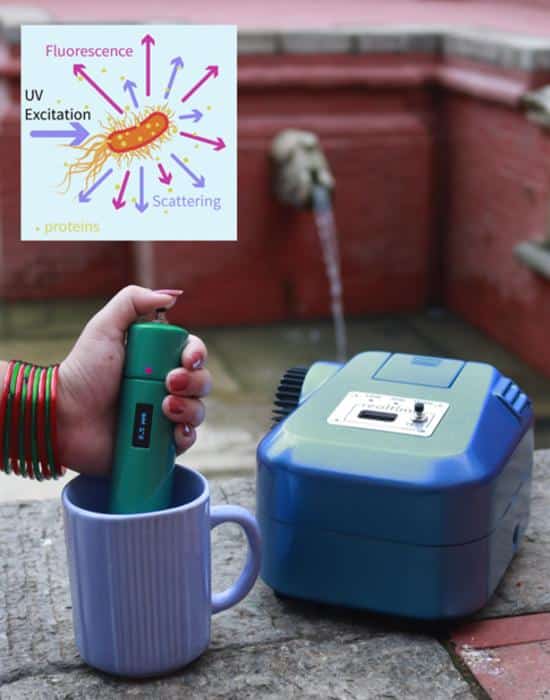A new lens-free fluorescence detection system developed by researchers promises to revolutionize water safety monitoring by providing an affordable and highly effective means of detecting deadly microorganisms in drinking water, potentially safeguarding millions of lives globally.
A pioneering lens-free fluorescence detection system has been developed by researchers to provide highly sensitive identification of deadly microorganisms in drinking water. This breakthrough promises a low-cost and user-friendly solution that could transform water quality monitoring in developing countries and disaster-stricken areas. The innovative approach could also offer quick water safety assessments for large-scale events like the Paris Olympics.
“In developing countries, unsafe water sources are responsible for more than 1 million deaths each year,” Ashim Dhakal, research team leader from the Phutung Research Institute in Nepal, said in a news release. “We hope that our work will facilitate the development of simpler and cost-effective yet highly efficient sensing paradigms for drinking water, saving countless lives around the world.”
The traditional methods of microbial contamination detection in water require time-consuming culturing of samples, sometimes taking over 18 hours to produce results. Such delays are impractical in emergency situations or in regions lacking adequate infrastructures, skilled personnel and necessary reagents, leading to ineffective water surveillance.
In their groundbreaking study published in the journal Optica, researchers from the Phutung Research Institute, University of São Paulo in Brazil and University of York in the UK revealed that their lensless water monitoring fluorometer can detect fluorescent proteins from harmful bacteria down to levels of less than one part per billion. This impressive sensitivity meets the World Health Organization’s criteria for detecting fecal contamination in drinking water.
“Today’s fluorometers typically use costly lenses that are made of specialty UV-transparent glass and require precise positioning,” Dhakal added. “We show that eliminating the lenses not only reduces the device cost, size and weight but also provides better performance given that we are not aiming for imaging here.”
Revolutionizing Optical Detection
Dhakal’s team, fueled by funding from the Optica Foundation Challenge, aimed to create a portable, affordable and user-friendly instrument for real-time water quality assessment. By examining the core principles of optical signal generation, the researchers realized that lenses often hinder performance in practical applications not requiring image capture.
“This was an important finding because lenses account for a significant share of the costs of optical systems and their bulk and weight make it difficult to create practical portable devices,” added Dhakal. “Our analysis revealed that using a light source, detectors and sample sizes that are all as large and as close to each other as possible produces a stronger signal, leading to better performance for water quality monitoring.”
Field-Ready and Highly Effective
The new lensless fluorescence system utilizes larger UV LEDs and detectors to excite proteins from harmful microbes and detect the resulting fluorescence. Their tests showcased that the lensless system’s fluorescence signals were nearly double in strength compared to lensed systems, which are often constrained by their numerical aperture and other physical limitations.

Credit: Rijan Maharjan, Ashim Dhakal, Phutung Research Institute
Currently, the researchers are fine-tuning a pocket-sized version of the lensless fluorometer for field testing to ensure it withstands harsh conditions and meets the specific bacterial contamination detection requirements.
“Our system is already highly useful because the sensitive and accurate measurement of concentration of bacterial proteins that it provides is directly related to the efficiency of water treatment, the dose of disinfectants required for disinfection and the likelihood of bacterial proliferation in a recontamination event,” said Dhakal.
As this promising technology advances towards wider application, it holds the potential to vastly improve water safety and public health, particularly in vulnerable regions where reliable detection methods are most needed. With its simplicity, cost-effectiveness and high sensitivity, this lens-free fluorescence instrument stands to make a life-saving difference on a global scale.

